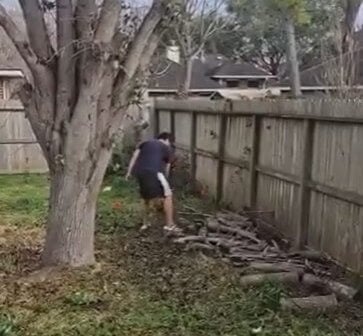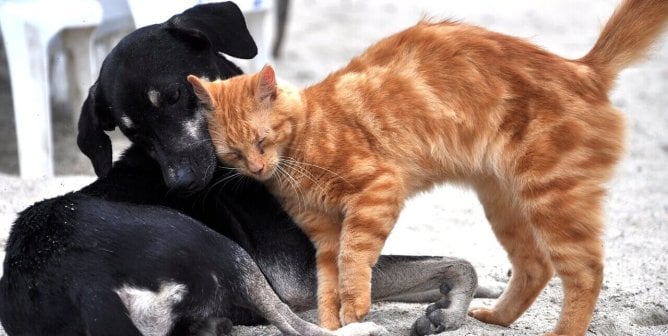Animal Shelters: Hope for the Homeless
Some animal shelters are wonderful places; others are hideous dumps. Their treatment of animals, purposes, and capacities vary greatly. They may be run by the government, local humane societies, or private individuals. Some are funded by donations alone, while others receive tax support. Sometimes tax money comes with a stipulation that some animals must be turned over to experimenters. Every effort should be made to eliminate this policy, which is known as “pound seizure.” (See the “Pound Seizure” factsheet for more information.)
Some shelters take in only dogs or only cats, but most take in both, as well as smaller animals like rabbits, hamsters, and exotic birds. Some can properly handle wildlife; others refer wildlife emergencies to naturalists or wildlife rehabilitators. If a wildlife facility is nearby, it handles all incoming wildlife.
Because of severe space limitations, most shelters euthanize animals who are old, seriously ill, or aggressive as well as those who remain unclaimed or unadopted after a certain number of days.
The Ideal Animal Shelter
The ideal shelter is a true safe haven for lost, injured, abused, and unwanted animals. It receives adequate funding from the jurisdiction that it serves, and no animal is ever knowingly given to a laboratory, guard dog company, or unqualified or cruel guardian. When euthanasia is necessary, it is painless rather than traumatic.
The ideal facility also has kind, attentive, knowledgeable staff members, cruelty investigators, spacious indoor/outdoor housing for dogs and cats, a pre-release spay-and-neuter program, pre-adoption screening and follow-up programs, and a comprehensive humane education program. The staff is supplemented by active volunteers. Animals are provided with veterinary care, and there are sick wards and rooms for isolating newcomers.
The ideal cat room has windowsills and various nooks and perches where cats can lounge, feel safe, or sleep. Cats are allowed to roam the room freely. They won’t fight because they know that no one cat “owns” this territory and because each adult is spayed or neutered before being introduced into the room. The ideal shelter also has areas for cats who must be confined because they need to be observed or because they feel more secure alone when they first arrive.
The public is made to feel welcome, and there is a quiet room where people can be alone with the animal they are considering adopting.
Through a strong publicity program, the public is made aware that the shelter is working to eliminate the companion animal overpopulation crisis, the primary cause of homelessness among animals, and that animals are available for adoption at the shelter. Sometimes, as a public service, local newspapers are willing to publish a notice or a list of animals who are available for adoption, along with the shelter’s public hours. They may also print a photo of one of the animals, which is a good way to attract attention. As a public service, local radio and television stations may also be willing to publicize the shelter. Notices and photos can also be posted in stores, animal hospitals, etc.
The ideal shelter is open for redemption and adoption of animals during hours that are convenient for working people. It is open at least several evenings a week and at least several hours each weekend.
When animals must be euthanized, a painless intravenous injection of sodium pentobarbital should be administered by gentle, caring staff members. (For animals who are feral, very small, or very young, an intraperitoneal—in the stomach cavity—injection may be acceptable.)
Remember: The programs and facilities above would be included in the ideal shelter, and with the help and persistence of dedicated volunteers, good shelters can become ideal shelters.
Less Than Ideal
“No-kill” shelters euthanize animals only under extreme circumstances, if at all. Because of this, they cannot accept all the animals who are in need of help. Some no-kill shelters only take in animals who are highly attractive, young, or purebred or those who come from the police stations of certain municipalities. Many of these shelters direct people with unadoptable, old, injured, or sick animals to facilities that have no choice but to kill the animals to make room for new arrivals. Each time such a referral is made, there is a greater chance that the animal will be abandoned instead of taken to a shelter.
At some no-kill shelters, “unplaceable” animals end up confined to cages for years. They may become withdrawn, severely depressed, and “unhousebroken” or develop anti-social behaviors that further reduce their chances of being adopted. Well-meaning people who take on the huge physical and financial responsibilities of a no-kill shelter often find themselves overwhelmed very quickly, and too often, the animals suffer from lack of exercise, playtime, and individual care and attention, ending up warehoused in misery. Some “no-kill” shelters have been shut down by humane officials after gradual neglect turned into blatant cruelty.
Improving Your Local Shelter
Many shelters are in serious need of reform. Citizen involvement is essential if progress is to be made. You can be successful by organizing friends, neighbors, and other concerned individuals to take action:
- At all times, maintain a positive attitude. For each problem that you encounter, offer a solution, along with assistance in implementing your suggestions.
- Focus on specific problems. And don’t expect to get everything that you ask for all at once.
- Document! Before you can launch a campaign to make changes at your local humane society or shelter, you must thoroughly document the abuses occurring there. Common problems include cruel killing methods, dirty conditions, lack of veterinary care, lack of adequate food and water, poor record-keeping that results in animals being “accidentally” destroyed, lack of spay/neuter requirements or programs, pound seizure policies, inadequate screening procedures for adoption applicants, and callous, untrained, or unthinking staff. To effectively document abuses, volunteer at the facility or visit it frequently. Compile photographs, written statements, and observations about specific incidents and conditions. Record all pertinent information (date, time, people involved, weather conditions, etc.). Label each photo and get statements notarized. Have as many people as possible visit the shelter and document their experiences. Be sure to keep copies of all your documents and correspondence.
- Organize a group. After you have collected concrete evidence indicating that there are poor conditions at the shelter, enlist others to work with you. Not only will you need help with your campaign, you’ll also find that public officials tend to be more receptive to groups than to individuals. You might want to run an advertisement—use an address with a post office box—in your local newspaper, asking people who have complaints about the shelter to write to you. For instance: “Do you think that our animal shelter needs improvement? If you have experienced problems with the shelter or want to get involved in efforts to improve it, write to ….” In your ad, be careful not to target any individual, such as the shelter director.
- Organize a meeting with other interested people and set goals. Address the most serious problems first. Group members should be familiar with your state’s anti-cruelty statutes, local animal ordinances, and the specifics of animal behavior and care. Your efforts will be more productive if each member has clearly defined responsibilities.
- Present your case. Depending on the problems that you have observed, you may want to start by meeting with the shelter director to discuss how you might help improve the facility. If this approach fails or is not feasible, request a hearing before the agency that oversees the shelter—the city council, board of county commissioners, or the humane society’s board of directors. Attend the hearing with members of your group and as many other supporters as possible. Present your documentation in an organized way, and be specific. To maintain a high profile in county politics, have several of your group’s members regularly attend these public meetings. This is essential to monitor progress and show officials that your group is serious about reaching its goals.
- Launch letter-writing campaigns to contact local officials. Be sure to write letters of thanks when improvements are made. Develop media contacts so that the entire community gets up-to-date information. Local newspaper and TV reporters who are sympathetic to your concerns can be valuable allies.
- Write letters to the editor. Keep the issue alive in the media by using this easy, free channel to educate the community!
- Get involved in local politics. If there is an upcoming election, you may want to meet with one or more candidates. Schedule your meetings early in the race, dress professionally, and keep your presentations short and concise. Emphasize votes first, and if the candidate is sympathetic to your concern for animals, you may want to offer your group’s endorsement and active support. You will be in a good position to influence your candidate if you have helped get him or her into office.
For more information on improving conditions for animals at your local shelter, please visit PETA’s Companion Animal factsheets.








